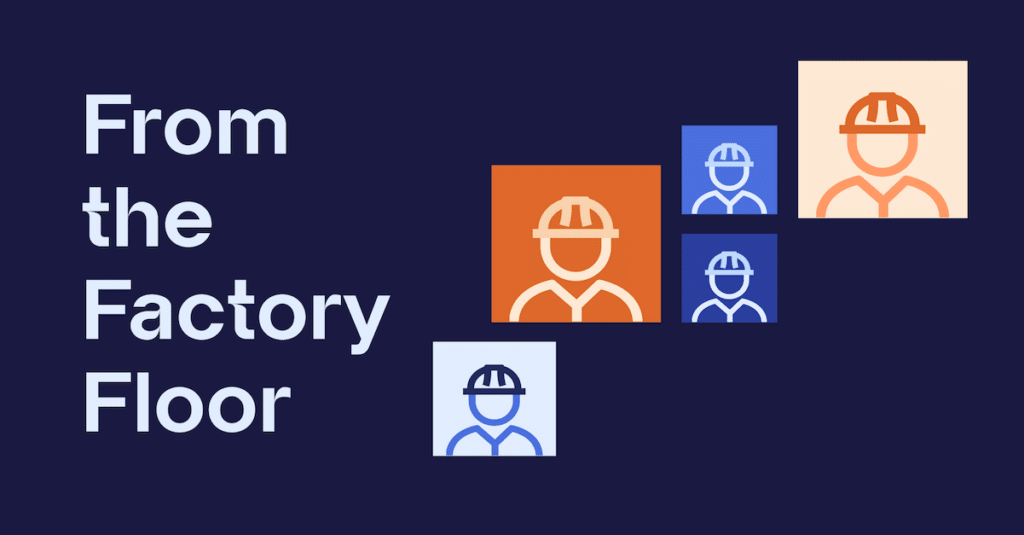
Maintenance teams hard at work on the factory floor have always struggled to find the technical information they need – even in the internet age, acquiring reliable machine documentation is time consuming and imprecise. Enter Generative AI.
In this age of ChatGPT, Claude, and other Gen AI tools, many people – including those in industrial settings – have experimented with and even walked away impressed with the capabilities. But what most don’t realize is that feeding those tools specific data and relevant information makes it much more powerful–and can provide the needed guidance, quickly and easily. This strategy will be highly impactful for the maintenance industry and will drive natural engagement from the teams on the field due to the high level information they can easily access at their fingertips.
The Old Way: Search, Skim, and Hope
Imagine you’re a manufacturing maintenance technician working for a large food and beverage supplier. You’re responsible for dozens of machines, including mixers, pumps, conveyors, centrifuges, etc. Currently there are a handful of ways in which you might look for information related to a plant-floor asset:
- Ask the old timer that’s been there for 25 years and hope they are correct
- Watch videos online
- Read manuals and search for important or relevant information
- Communicate with the OEM to obtain higher-level documentation or set up training
Combing through equipment manuals, watching scattered YouTube videos, and navigating endless Google searches is no way to spend your precious time. With the power of Generative AI, technicians now have access to personalized, high-level support that turns a mountain of documentation into a conversational partner.
Unlock the Power of Your Own Documents
Simply using Gen AI instead of internet searches is already more effective than the old methods, but the real magic happens when you upload the documents specific to your equipment:
- Owner and maintenance manuals
- Drawings
- Spare parts information
- Repair procedures
- Technical specs
- Past maintenance records
Suddenly, that pile of unstructured information becomes a searchable, interactive expert. You can ask it questions in plain language, and it answers with precision tailored to your equipment. You’ve turned a search engine into an experienced coworker.
A Real-World Example
Let me give you a real-world example of how powerful this practice can be. A few weeks ago I participated in a 150-mile bike ride across Texas. I’m a reliability engineer by trade so you’d think I’d be in great shape when it came to preparing my own bike. Wrong.
Here’s my pre-ride maintenance checklist: :
- Had the bike inspected by a shop
- Installed a new chain
- Cleaned the gearsets
- Took a five-minute test ride (really just coasting down the street).
It was basic, but I thought I was good to go.
Ten miles into the 150-mile ride I noticed my rear brake was dragging. Every time I stopped pedaling, the rotor would hum like a tuning fork. After about five minutes of heavy thinking while struggling to pedal up multiple hills, I realized I had overtightened my rear axle and that one brake pad was likely rubbing whenever the frame deflected from lack of torque when pedaling.
At a repair tent, a bike tech just made things worse. I rode for another 30 miles with a dragging brake and a clanking drivetrain, too stubborn to let another tech attempt to fix it, and too embarrassed to make the group wait. Eventually I found a competent tech and he centered the caliper and fixed the shifting issue that the previous tech created.
Lessons learned: I should perform longer test rides after making adjustments (easy to fix) and I lack both the tools and the knowledge needed to work on my bike (difficult to fix).
Building a Personal AI Agent for My Bike
After the ride, I decided to address the lessons learned. I gathered everything I could find related to my bicycle and uploaded it to a project in ChatGPT. This included operator manuals,tuning guides, component specs, and parts diagrams.
The results of this were far better than I could have imagined. I asked the agent several test questions – everything was spot on. I could share 10 pages of prompts and answers (which blew my mind) but have included some of more impressive and relevant ones:
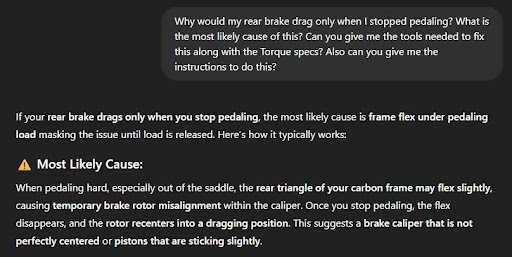
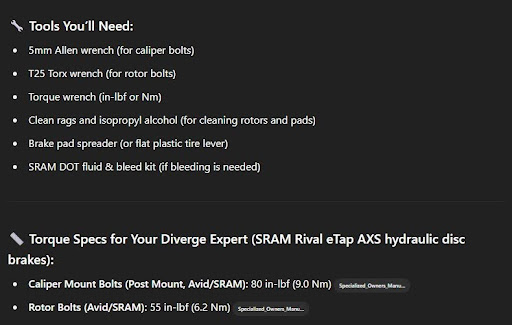
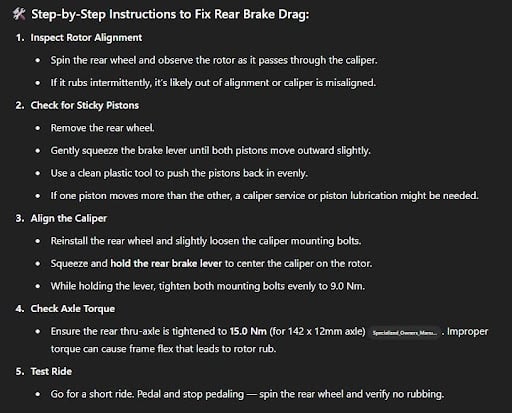
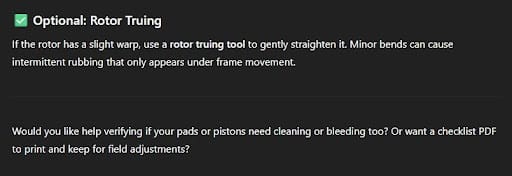
Remember that I have been troubleshooting and fixing things most of life. I had come to the conclusion that when I removed my wheel to clean the rear gear set I tightened the axle a little too tight which is what likely caused the brake to rub. The fact that AI flagged this as the most likely scenario is impressive. I continued the conversation.
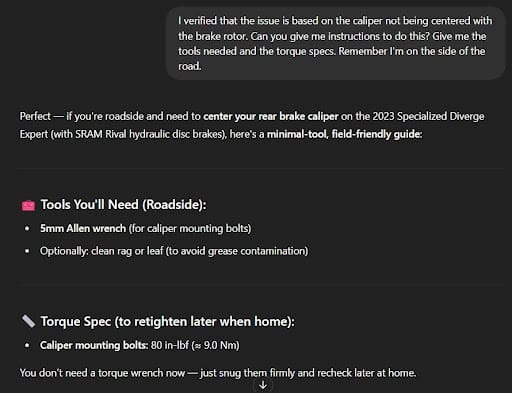
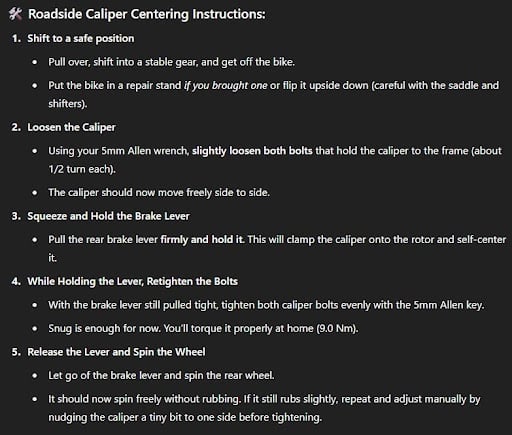

This is exactly what the technician did to fix my bike.
I spent a little more time asking my new agent for recommended spare parts and tools, how to make common adjustments, and information around the most common failure modes. I gathered up the tools and practiced the adjustments. I now had new skills that gave me increased knowledge and confidence, and the reassurance that if something unexpected comes up – which is bound to happen – I’ll have my agent and co-pilot with me on my phone. Teamwork for a new era.
The Future of Skilled Trades
Whether you’re working on a hydraulic pump, a palletizer, or a bicycle, Gen AI is changing the game. The ability to create a virtual assistant that understands the quirks of your unique assets will save hours, increase accuracy, and remove so much of the guesswork.
For manufacturing maintenance and reliability teams, the key is working with the OEMs to ensure you are feeding Gen AI accurate and relevant information. This is when things get exciting and will without a doubt result in heavy engagement from the personnel on the shop floor.
See how human-AI collaborations are being optimized for the industrial sector in this Forbes interview with Augury’s VP of Strategy Artem Kroupenev.



